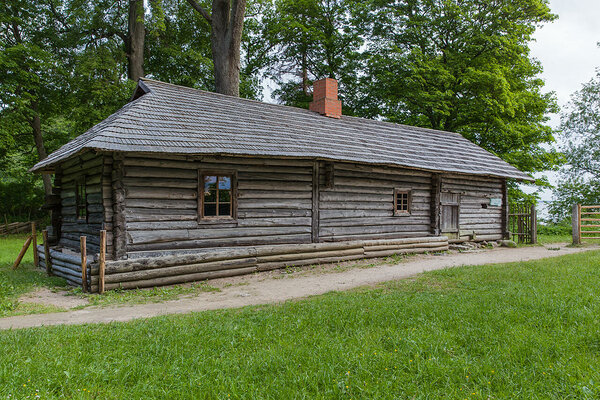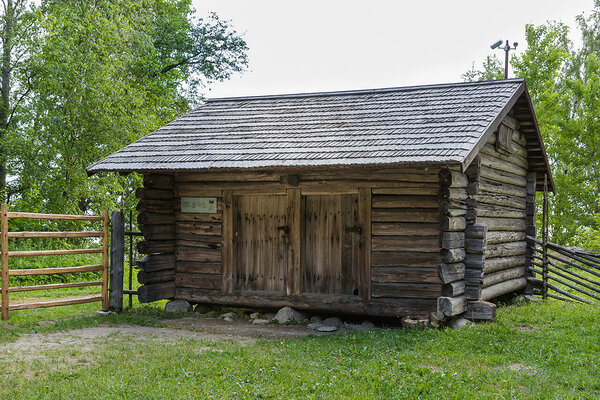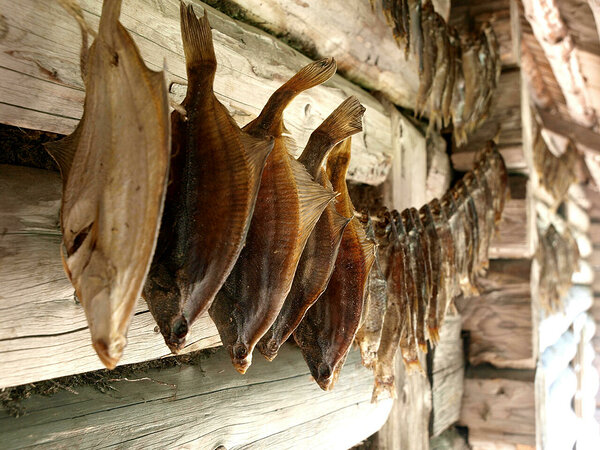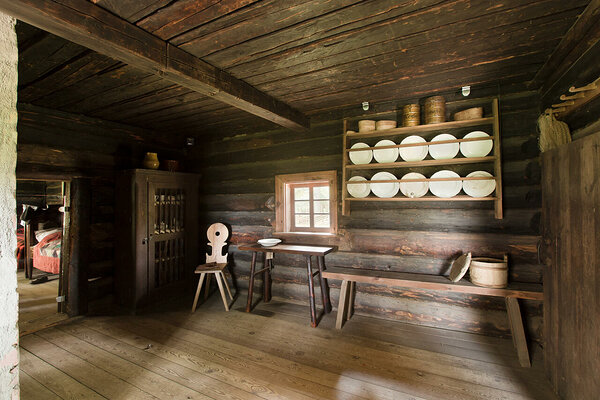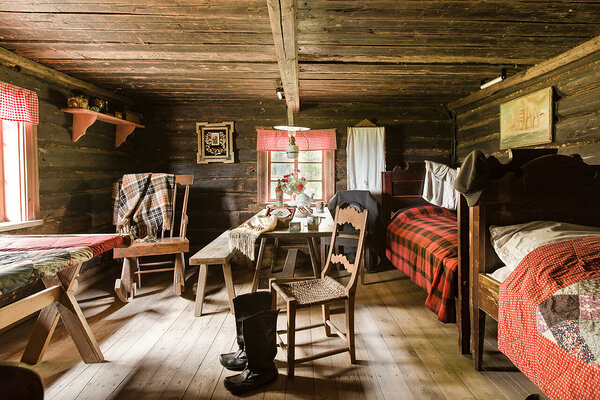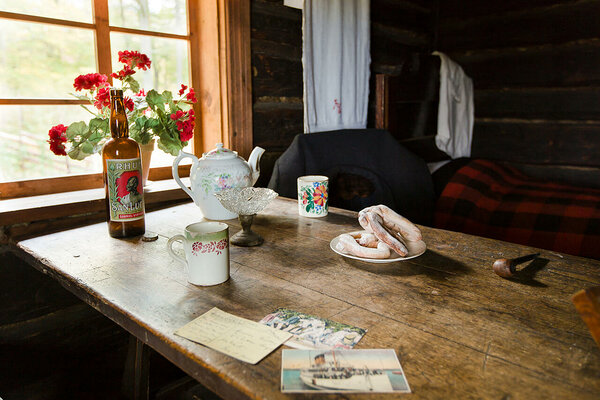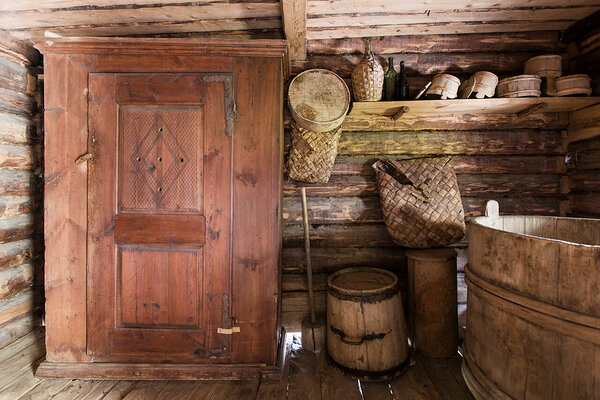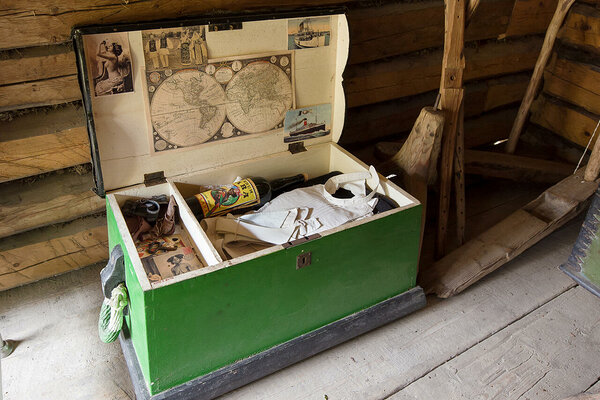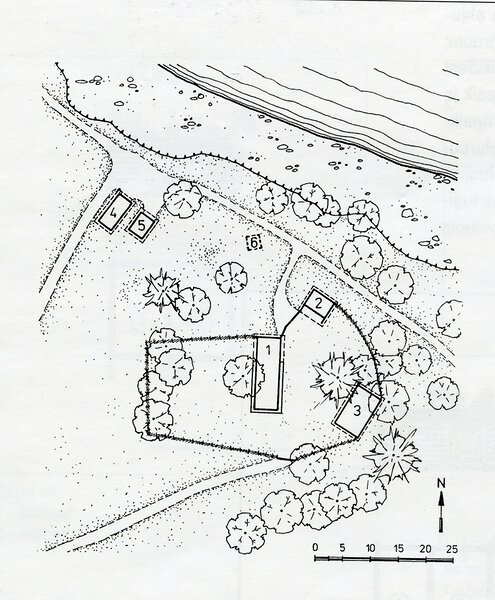End of the 19th C
Aarte farm is an example of a small farm belonging to a fisherman in the 2nd half of the 19th century. Farm buildings have been brought from Aarte farm in Virve village on Juminda peninsula, Kuusalu parish. The farm was opened for visitors in 1982.
The fisherman’s family only had 3–4 ha of land where it grew potatoes and vegetables. It got grain for making bread from inland farms in exchange for fish. Fishing was the main source of income, and more could be earned by serving on ships and working in construction. The fishermen inhabiting the villages along the coast of the Gulf of Finland had close contact with the Finns for centuries because owning a boat was much more common than having a horse. This is why their language and culture adopted numerous Finnish traits.
Fishermen’s lifestyle changed for the better in 1870s, when coastal trade expanded mainly because potatoes were taken for sale to Saint Petersburg and to Finland.
The dwelling was presumably built in 1880; it was brought to the museum in 1966 and erected in 1967–1968. This so-called two-side dwelling (when rooms are located on both sides of the entrance hall), which is a layout typical of Northern and Eastern Europe, was rather unusual for Estonian rural architecture and only common to a narrow area on Kuusalu spits. One door from the entrance hall opens into a room on the right, where cooking was done on the stove with covered heating stones and a chimney. From this room we get into a colourful chamber decorated after Finnish fashion, with red checked curtains, quilted bedspreads, and rugs on the floor. In the corner there is a rocking chair, which was a huge favourite in Northern Estonia (and on the islands, too). Most of what people bought was brought from Finland. The hall chamber to the other side of the entrance hall serves as a pantry and storeroom. In large dwellings of this type this was where maids slept in the summer.
The storehouse was built in 1860s; it was brought to the museum in 1966 and erected in 1967. The building has two rooms, with food storage on the left; it was used for keeping the salt vat, barrels of herring, milk bowls, fishing net floats, ropes, the fire-steel for holding the light during night-time fishing, etc. The textile storage on the right was used for keeping clothes as well as spinning wheels, reels, netting stands and the green sea chest of the seaman who has come home.
The cattle-shed was built in the beginning of the 20th century; it was brought to the museum in 1979 and erected in 1979–1980. On the left, there is a shed for a cow, 2–3 sheep, a pig and chickens; the hay shed is on the right.
There are also 2 net sheds on Aarte farm: Vergi shed built at the turn of the century in Haljala parish and Eisma net shed built at the beginning of the 20th century.
Farmyard plan 1 - dwelling, 2 - storehouse, 3 - cattle-shed, 4 - Eisma net shed, 5 - Vergi net shed, 6 - smoking oven (presently not built)
Did you know?
- In the room, thin rounds of so-called Finnish bread pierced in the centre have been hung from the ceiling in front of the stove to dry. This bread was baked and put up to dry 3–4 weeks before a long sea voyage because usual rye bread tended to mould at sea. The bread was dipped in liquid before it was eaten; otherwise one could break a tooth.
- The foundation of dwellings is surrounded with an earth bench made of logs and filled with sand or earth. It keeps the warmth inside and does not let cold wind from the sea get under the floor. In summer it would sometimes be taken apart to let the building dry.
- Before World War I, most of the necessary goods that coastal folk used to buy came from Finland. Finnish supplies included fishermen’s raincoats, sailor hats, slippers, checked fabrics, copper coffee pots, rocking chairs and push-sledges as well as coffee and delicious fish dried on birch bark.
- It was already at the end of the 19th century that coastal Estonians took over the Finnish tradition of drinking grain coffee, which spread wider in Estonia much later, in 1920s–1930s.


